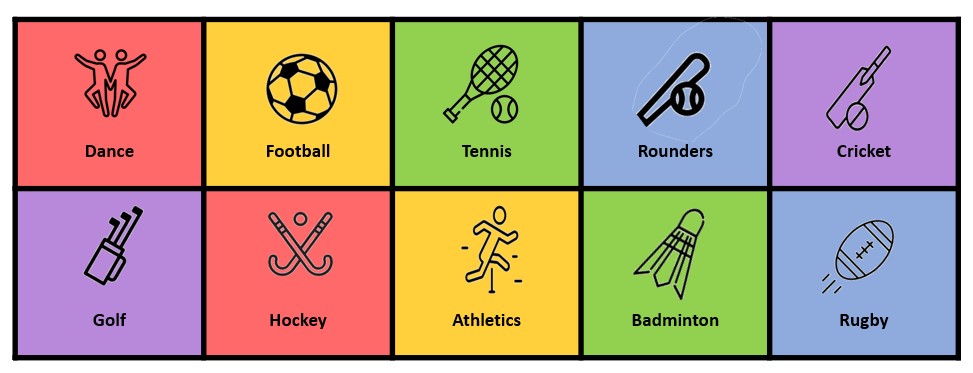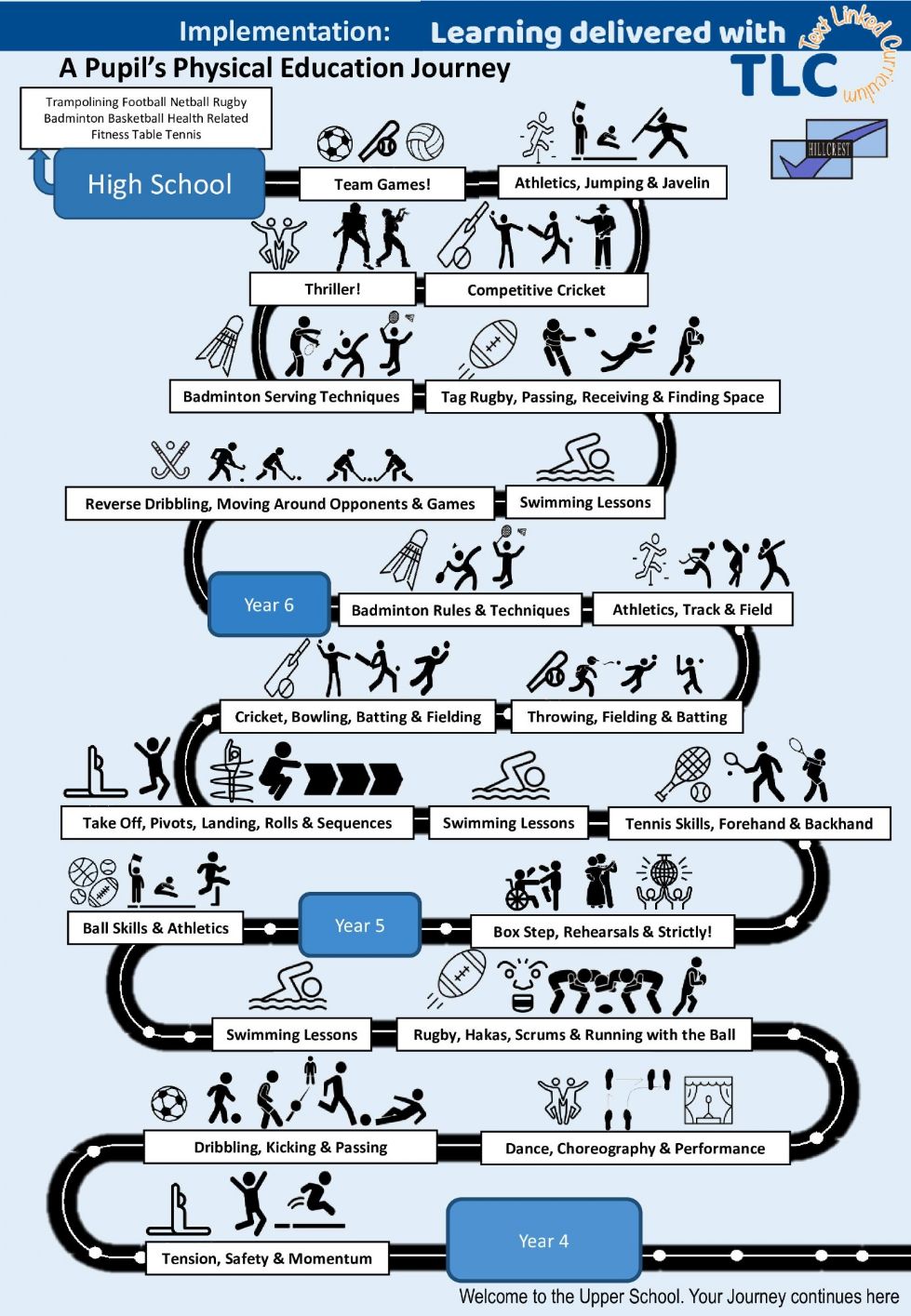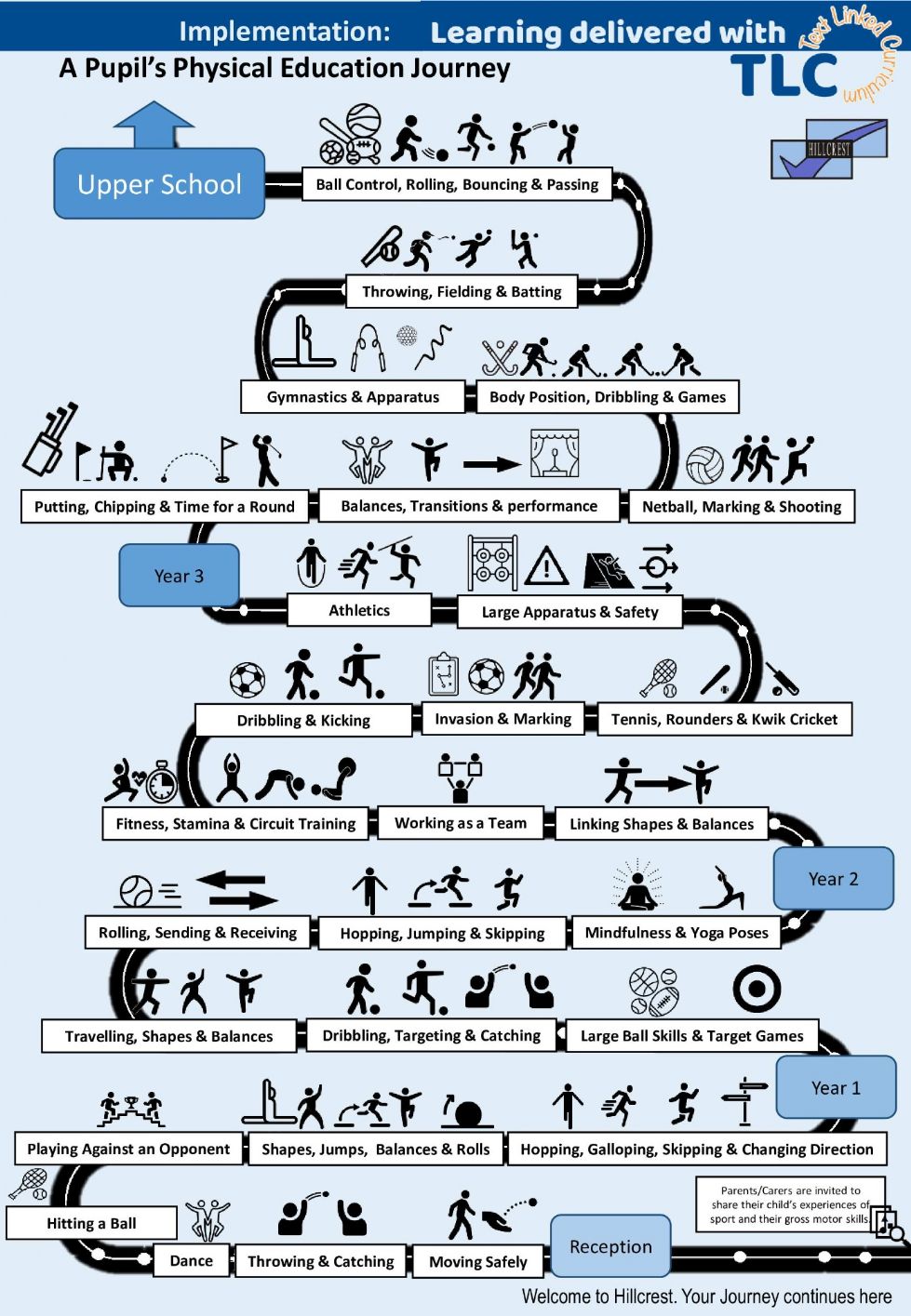Physical Education

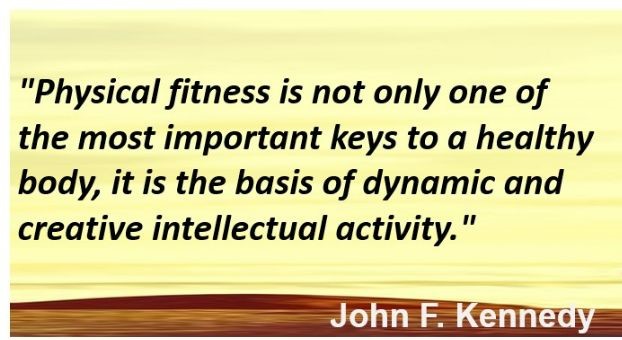
Hillcrest's 5 Principles of Physical Education
At Hillcrest, each subject team has created 5 key principles, outlining what makes up quality teaching in each subject:
|
|
|
|
|
|
|
|
|
Click on the INTENT, IMPLEMENTATION and IMPACT bars below to discover why and how we teach Physical Education.
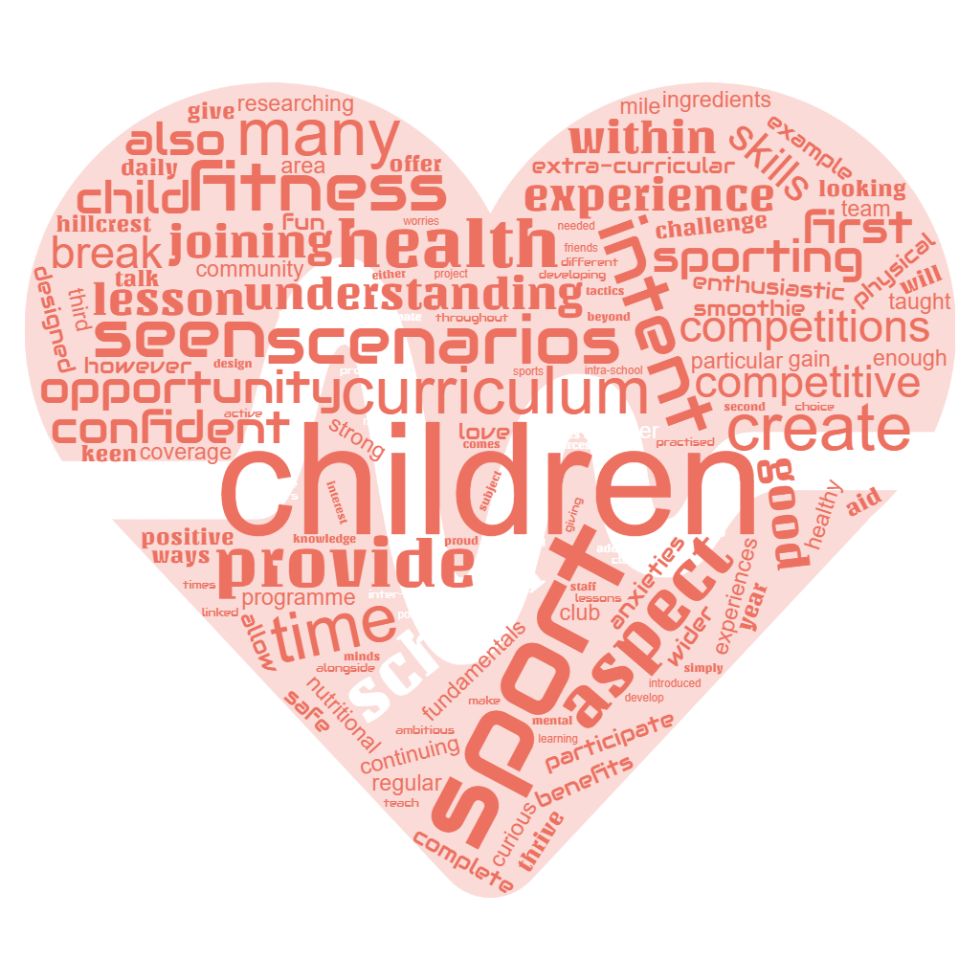
INTENT Statement for Physical Education
At Hillcrest, we strive to develop children who have a love for sport, have a good understanding of health and fitness and are confident in competitive sporting scenarios.
The first aspect of our intent is to create a ‘love for sport’. We are proud to have a strong and enthusiastic staff team who are passionate about what they teach. With this in mind, each PE lesson is designed to be informative, challenging and fun. We aim to provide every child with positive experiences within this area, with an aim that they will be curious and ambitious enough to continue their learning beyond the lesson. This could be seen through a number of different ways: through continuing a sport they have been introduced to at break times (we provide a number of resources to allow this to happen); through joining an extra-curricular club, either at break time or after school; through joining a sports club in the wider community; or simply through developing an interest in a particular sport and researching this in their own time.
The second aspect of our intent is to create a ‘good understanding of health and fitness’. We have this at the heart of our school curriculum and it can be seen throughout many subject areas. For example, within Year 6, the children complete a project where their challenge is to create a fitness programme linked to a sport of their choice. Alongside this, they design and make a healthy smoothie, looking at the nutritional benefits of all of the ingredients. In addition to the curriculum coverage in this area, all children participate in a ‘Daily Mile’. This provides an opportunity for all children to gain 15 minutes of physical activity. However, this is also seen as an opportunity to aid the mental health of the child, giving them time to clear their minds from the regular curriculum, or to talk to friends or teachers about any worries or anxieties.
The third and final aspect of our intent is for children to be ‘confident in competitive sporting scenarios’. We aim to give all children the skills, knowledge and experience needed for them to thrive in these scenarios. As a school, we are very active in inter-school competitions and are keen for as many children as possible to experience this. We also offer many intra-school competitions to provide a safe place for this to be practised. The fundamentals of this comes from the PE lessons where skills and tactics are first taught.
IMPLEMENTATION Statement for Physical Education
At Hillcrest, we use ‘GetSet4PE’ to aid our PE teaching. This is a detailed scheme that provides lesson plans, resources and assessment.
Using this scheme, a curriculum map has been designed to cover all areas of the PE curriculum, with opportunities for revisiting and consolidating skills and sports. Using the plans from the scheme as a starting point, teachers adapt and plan lessons which are appropriate for their class’ needs and abilities.
PE in EYFS is focused on learning the basic principles of PE. Their journey begins with learning structured movement and the fundamentals of running, jumping and skipping. They continue their journey by developing their ball skills, exploring movement through dance with music, learning control and balance through an introduction to gymnastics and finally, they incorporate the skills they have developed through games, where they will learn how to score, follow rules and work in teams.
PE in KS1 continues to develop the children’s learning of the fundamental movement skills. In addition to this, they work on more specific ball skills, learn tactics and rules for invasion games, learn movements and skills related to athletics and begin to use more sport specific equipment for striking and fielding.
PE in KS2 focuses on learning sport specific skills, rules and tactics. Children learn these skills through a wide range of sports, such as: golf, tennis, dance, OAA, gymnastics, football, basketball, athletics, yoga, cricket, rounders, hockey, rugby, netball, dodgeball, lacrosse and badminton. In addition to this, swimming is taught within years 4, 5 and 6. Two professional swimming coaches, alongside the class teacher, guide the children through a range of strokes as well as general water safety skills.
IMPACT Statement for Physical Education
Hillcrest students gain a wide range of physical skills, a strong sporting knowledge and a good health and fitness understanding. They grow into well-rounded children who are confident and resilient. This is evident through our high uptake for extra-curricular clubs, the high proportion of students that join community sports clubs in the area and our success at intra school competitions. Children are confident and excited to represent the school in many different sporting scenarios and they continuously make the school incredibly proud!
Explore the blue banners below to find out more about what specific themes we teach in Physical Education and how these themes are revisited, recalled and expanded upon as the children journey through the school.
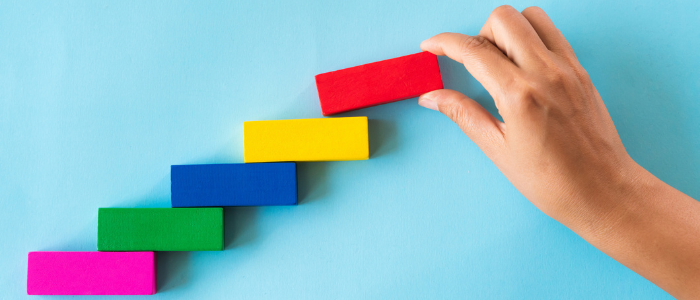
Year Group Overviews for Physical Education
There are several themes that are repeated throughout the school as part of our spiral curriculum.
Progression for Physical Education
We have various Progression documents available to download by clicking on the following images:
DANCE FUNDAMENTALS GAMES
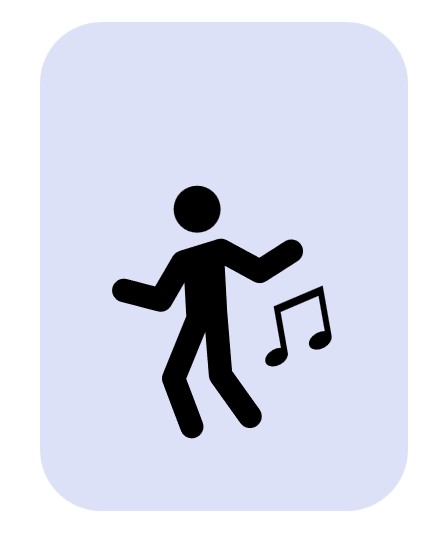
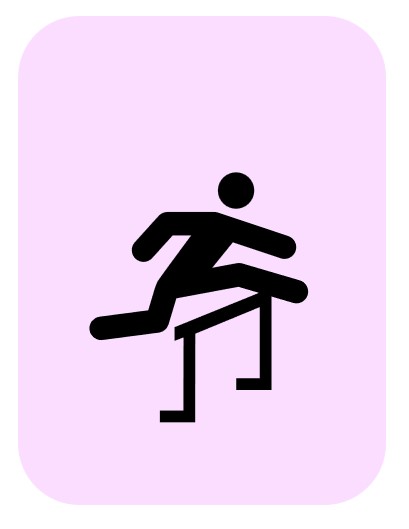
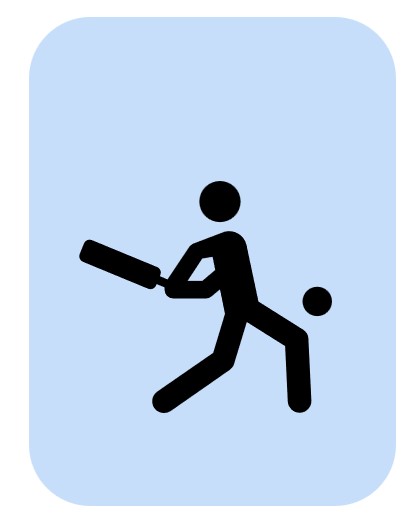
BODY MANAGEMENT ADVENTURE SWIMMING SOCIAL & EMOTIONAL
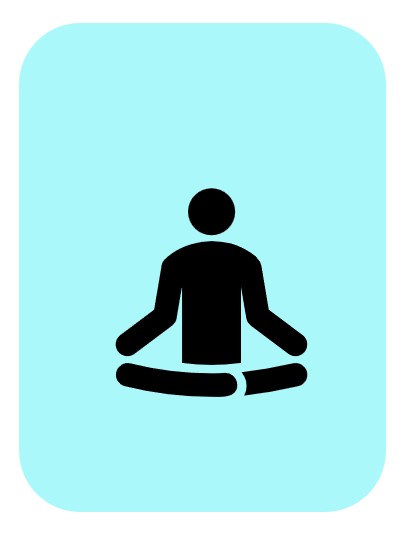
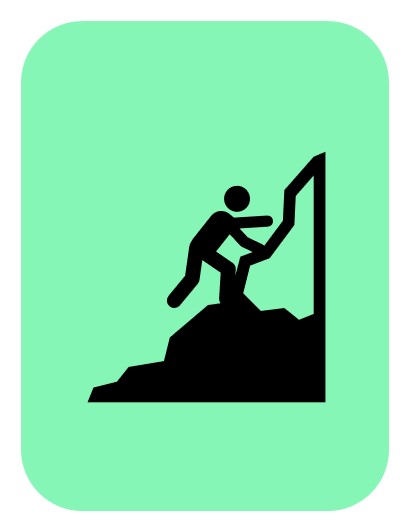
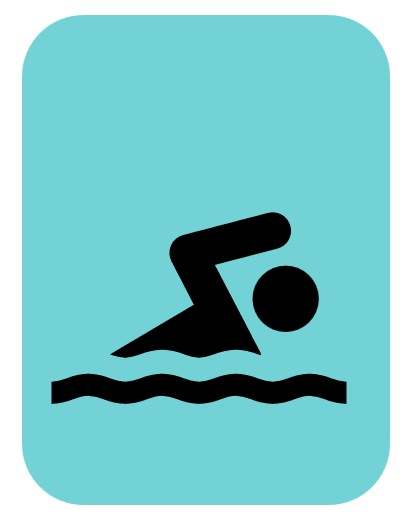
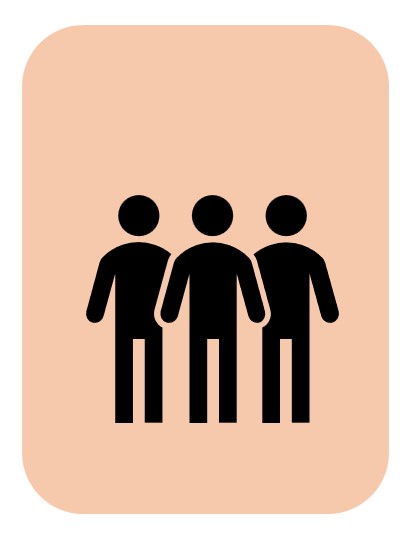
Learning Journey for Physical Education
Watch out for the following symbols in the Physical Education Learning Journey:
